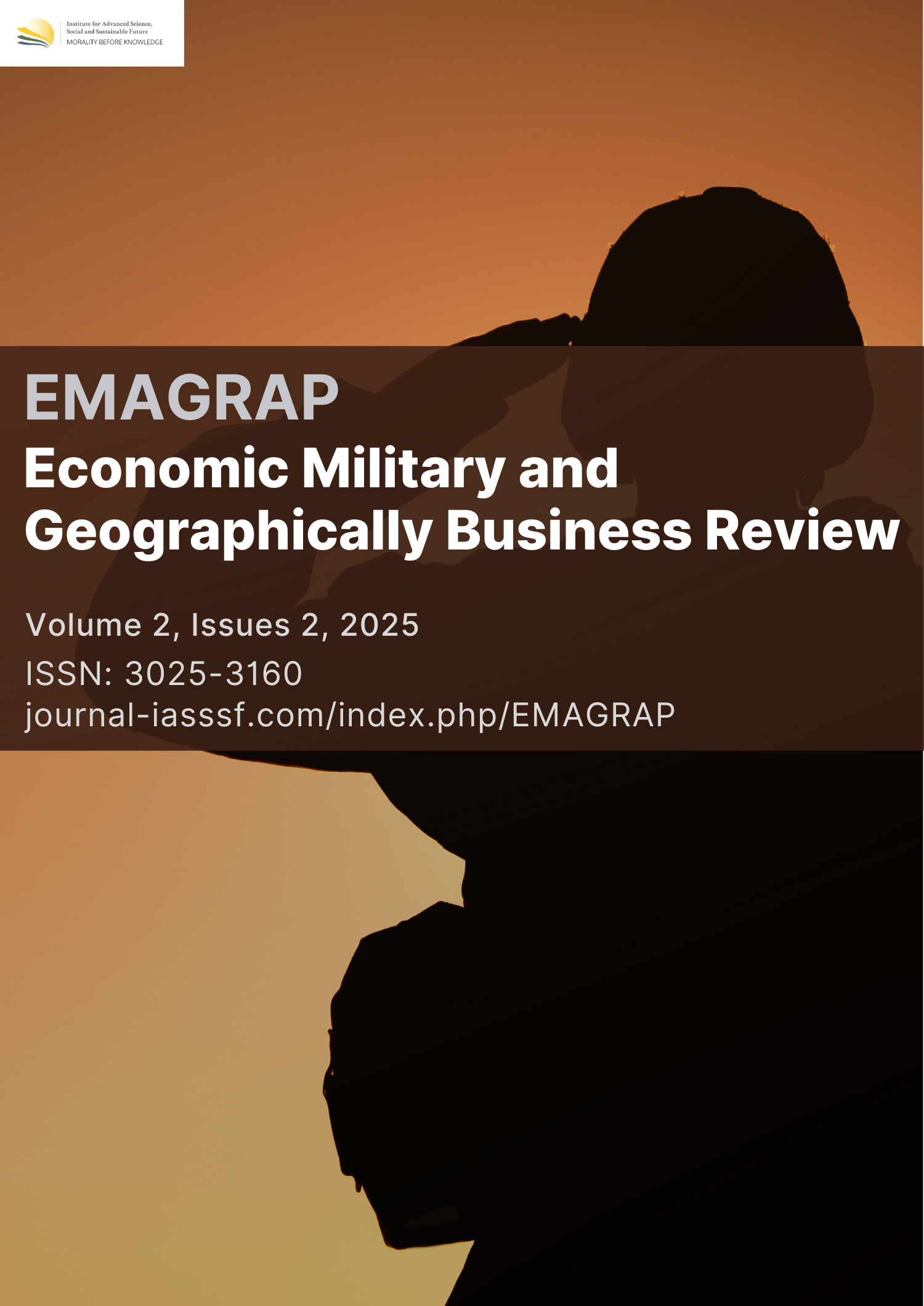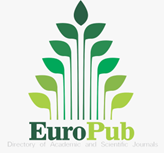Optimizing the utilization of coal in Indonesia through downstreaming: Economic benefits, challenges and solutions
DOI:
https://doi.org/10.61511/emagrap.v2i2.2025.1472Keywords:
coal, downstreaming, environmental sustainability, global, optimizationAbstract
Background: This study delves into the strategic optimization of coal resources in Indonesia through downstreaming, aiming to contribute to sustainable and value-driven utilization of the country's mineral wealth. The research highlights the benefits of downstreaming, including increased economic value and state revenues, while acknowledging the challenges such as environmental impacts and the need for advanced technologies. Methdos: This qualitative study analyzed coal utilization efficiency through downstream strategies, gathering insights from seven key informants in the coal sector. Data was collected via document analysis of EIA/ESIA reports, relevant regulations, and guidelines. A qualitative comparative analysis and descriptive methods were employed to identify patterns and challenges in coal beneficiation, focusing on stakeholders' views on the issue. Findings: The slow progress of coal downstreaming in Indonesia is attributed to financial constraints, technological complexity, and unclear regulations, despite government incentives. Strengthening collaboration between mining and energy production companies is key to improving coal utilization. Increased government support and commitment are needed to attract financial backing for downstream projects. Additionally, ongoing technical and economic studies on coal conversion for secondary and tertiary energy sources are essential to ensure energy availability, affordability, and sustainability. Conclusion: The study emphasizes the importance of collaboration between mining companies, downstream companies, and the government, as well as the implementation of supportive regulations and incentives to encourage coal downstreaming. Overall, the study provides strategic recommendations for Indonesia to enhance the efficiency and responsible utilization of its coal resources through downstreaming. Novelty/Originality of this article: This study underscores the strategic importance of coal downstreaming in Indonesia, highlighting its economic potential, environmental challenges, and the need for collaboration and supportive policies to ensure sustainable resource utilization.
References
Afkarina, K. I. I., Wardana, S., & Damayanti, P. (2019). Coal mining sector contribution to environmental conditions and human development index in East Kalimantan Province. Journal of Environmental Science and Sustainable Development, 2(2), 192-207. https://doi.org/10.7454/jessd.v2i2.1025
Aimon, H., Kurniadi, A. P., Sentosa, S. U., & Abd Rahman, N. (2023). Production, consumption, export and carbon emission for coal commodities: Cases of Indonesia and Australia. International Journal of Energy Economics and Policy, 13(5), 484-492. https://doi.org/10.32479/ijeep.14798.
Anugrah, I. (2023). Land control, coal resource exploitation and democratic decline in Indonesia. TRaNS: Trans-Regional and-National Studies of Southeast Asia, 11(2), 195-213. https://doi.org/10.1017/trn.2023.4P
Bößner, S., Fauzi, D., & Rimal, P. (2023). A just coal transition in Indonesia: Actors, framings and future directions. Stockholm Environment Institute. https://doi.org/10.51414/sei2023.051
BPK RI. (2009). 2009 mineral and coal mining law. Badan Pemeriksa Keuangan Republik Indonesia. https://peraturan.bpk.go.id/Details/38578/uu-no-4-tahun-2009
BPK RI. (2020). Mineral and coal law no. 3 of 2020. Badan Pemeriksa Keuangan Republik Indonesia. https://peraturan.bpk.go.id/Details/138909/uu-no-3-tahun-2020
Handoko, S. (2023). Hilirisasi batubara solusi transisi energi (peluang, tantangan, dan kendala) [Conference presentation]. Webinar Hilirisasi Batubara Solusi Transisi Energi Balai Pendidikan dan Pelatihan Tambang Bawah Tanah. Kementerian ESDM. https://bdtbt.esdm.go.id/wp-content/uploads/2023/07/2.-Hilirisasi-Batubara-Solusi-Transisi-Energi_tekMIRA.pdf
Hawari, M. H. (2023, April). The effect of flow rates and composition of culture medium in Chlorella Pyrenoidosa cultivation by CO2 injection method. In IOP Conference Series: Earth and Environmental Science (Vol. 1157, No. 1, p. 012034). IOP Publishing. https://doi.org/10.1088/1755-1315/1157/1/012034
Ibrahim, H. R., & Fadillah, D. F. (2021). Indonesian coal export to Japan: International political economic review period 2010-2015. Journal of Social Political Sciences, 2(2), 157-175. https://doi.org/10.52166/jsps.v2i2.56
Lim, N., Felixius, V., & Weslie, T. (2021). Achieving sustainable energy security in Indonesia through substitution of liquefied petroleum gas with dimethyl ether as household fuel. Indonesian Journal of Energy, 4(2), 71-86. https://doi.org/10.33116/ije.v412.100
Manullang, G. H., & Isnarti, R. (2023). China’s energy diplomacy to coal imports from Indonesia after restricting coal import from Australia in 2019. Indonesian Journal of Energy, 6(2), 72-85. https://doi.org/10.33116/ije.v6i2.172
Muttitt, G., Price, J., Pye, S., & Welsby, D. (2023). Socio-political feasibility of coal power phase-out and its role in mitigation pathways. Nature Climate Change, 13(2), 140-147. https://doi.org/10.1038/s41558-022-01576-2
Nasir, M., Bakker, L., & van Meijl, T. (2023). Environmental management of coal mining areas in Indonesia: The complexity of supervision. Society & Natural Resources, 36(5), 534-553. https://doi.org/10.1080/08941920.2023.2180818
Ndjebayi, J. N. (2017). Aluminum production costs: a comparative case study of production strategy. Walden University. https://scholarworks.waldenu.edu/dissertations/4468/
Ordonez, J. A., Fritz, M., & Eckstein, J. (2022). Coal vs. renewables: Least-cost optimization of the Indonesian power sector. Energy for Sustainable Development, 68, 350-363. https://doi.org/10.1016/j.esd.2022.04.017
Pambudi, N. A., Firdaus, R. A., Rizkiana, R., Ulfa, D. K., Salsabila, M. S., Suharno, & Sukatiman. (2023). Renewable energy in Indonesia: Current status, potential, and future development. Sustainability, 15(3), 2342. https://doi.org/10.3390/su15032342
PLN EPI. (2023). Strategic role of coal to meet energy transition policy. PLN Energi Primer Indonesia https://cmsadmin.plnepi.co.id/storage/media/AR%20PLN%20EPI%20Tahun%202023.pdf
Rahman, A., Richards, R., Dargusch, P., & Wadley, D. (2023). Pathways to reduce Indonesia’s dependence on oil and achieve longer-term decarbonization. Renewable Energy, 202, 1305-1323. https://doi.org/10.1016/j.renene.2022.11.051
Rasimeng, S., & Mandang, I. (2019, August). Identification of eroded sediment layer thickness and depth of Mahakam River at Tenggarong Bridge Area, Kutai Kartanegara East Kalimantan using ground penetrating radar method. IOP Conference Series: Earth and Environmental Science, 279(1), 012040. http://dx.doi.org/10.1088/1755-1315/279/1/012040
Ragimun., & Rosjadi, I. (2020, December). Fiscal incentive policy for coal downstreaming in Indonesia. In IOP Conference Series: Materials Science and Engineering (Vol. 909, No. 1, p. 012055). IOP Publishing. https://doi.org/10.1088/1757-899X/909/1/012055
Rosyid, F. A., & Adachi, T. (2018). Optimization on long term supply allocation of Indonesian coal to domestic market. Energy Systems, 9, 385-414. https://doi.org/10.1007/s12667-017-0229-9
Saria, L. (2023). Peluang dan tantangan pengusahaan batubara dalam transisi energi. Paper presented A seminar on the Strategic Role of Coal in Energy Transitionin Energy, December 15th organized by Energy and Mining Editor Society.
Setiawan, E. N., Maryudi, A., Purwanto, R. H., & Lele, G. (2016). Opposing interests in the legalization of non-procedural forest conversion to oil palm in Central Kalimantan, Indonesia. Land use policy, 58, 472-481. https://doi.org/10.1016/j.landusepol.2016.08.003
Vilakazi, A. Q., Ndlovu, S., Chipise, L., & Shemi, A. (2022). The recycling of coal fly ash: A review on sustainable developments and economic considerations. Sustainability, 14(4), 1958. https://doi.org/10.3390/su14041958
Wang, C., & Cheng, Y. (2023). Role of coal deformation energy in coal and gas outburst: A review. Fuel, 332, 126019. https://doi.org/10.1016/fuel.2022.126019
Wang, Q., Yang, Y., & Zhou, H. (2023). Highly efficient CO2 capture and utilization of coal and coke-oven gas coupling for urea synthesis process integrated with chemical looping technology: Modeling, parameter optimization, and performance Analysis. Processes, 11(3), 960. https://doi.org/10.3390/pr11030960
Wollff, I. (2023). Coal resources, production, and use in Indonesia. In The Coal Handbook (pp. 361-430). Woodhead Publishing. https://doi.org/10.106/B978-0-12-824327-5.00008-9.
Xue, J. (2022). Urban planning and degrowth: a missing dialogue. Local Environment, 27(4), 404-422. https://doi.org/10.1080/13549839.2020.1867840
Yasin, C. M., Yunianto, B., Sugiarti, S., & Hudaya, G. K. (2021, November). Implementation of Indonesia coal downstream policy in the trend of fossil energy transition. IOP Conference Series: Earth and Environmental Science, 882(1), 012083. https://doi.org/10.1088/1775-1315/882/1/012083
Yudiartono, Y., Windarta, J., & Adiarso, A. (2023). Sustainable long-term energy supply and demand: the gradual transition to a new and renewable energy system in Indonesia by 2050. International Journal of Renewable Energy Development, 12(2). https://doi.org/10.14710/ijred.2023.50361
Zhang, F., Lu, J., & Chen, L. (2023). When green recovery fails to consider coal pushback: Exploring global coal rebounds, production, and policy retrenchment post COVID-19. Energy Research & Social Science, 101, 103142. https://doi.org/10.1016/j.erss.2023.103142
Downloads
Published
How to Cite
Issue
Section
Citation Check
License
Copyright (c) 2025 Dudi Rahman, Francis Raphael

This work is licensed under a Creative Commons Attribution 4.0 International License.














